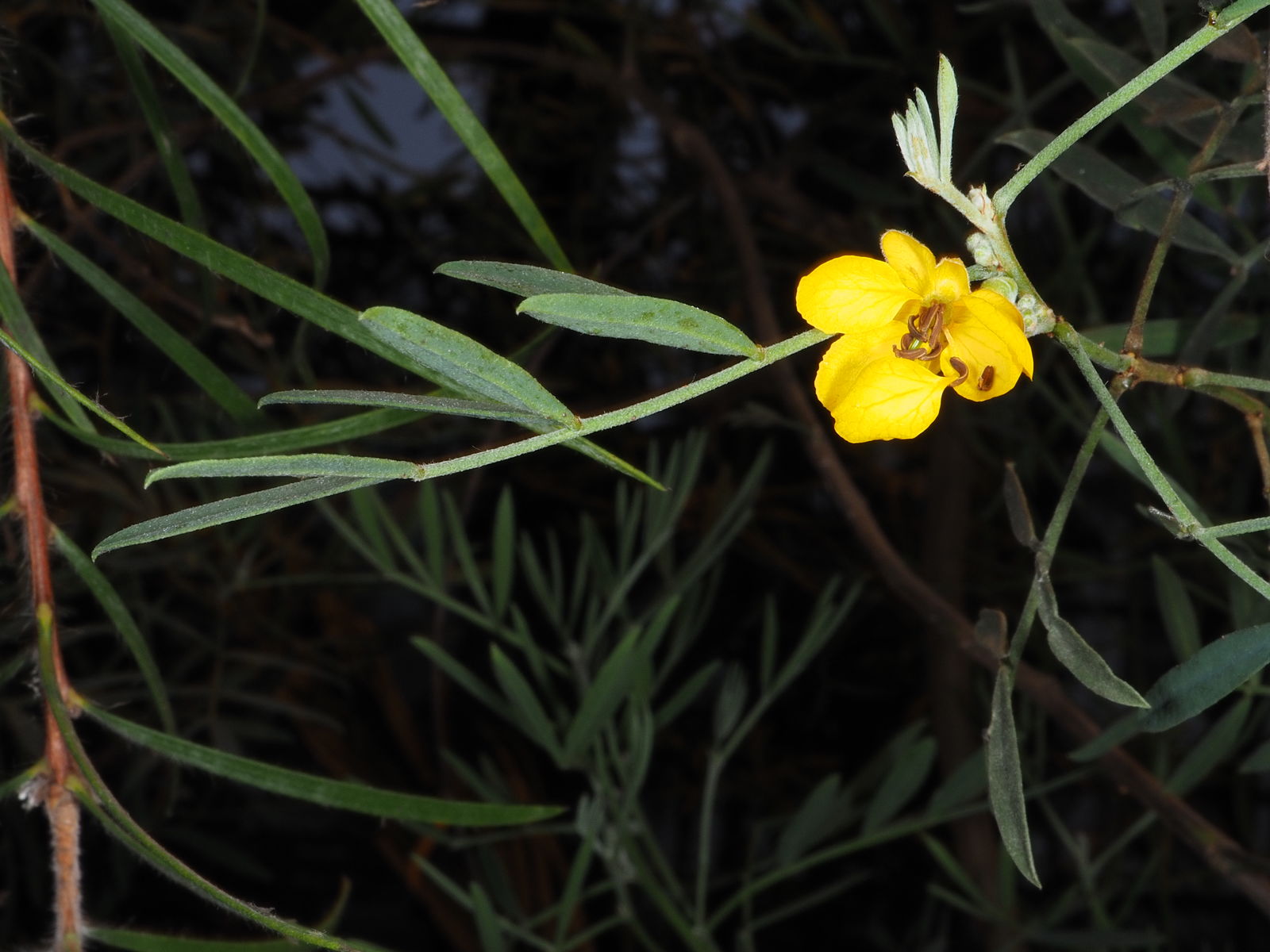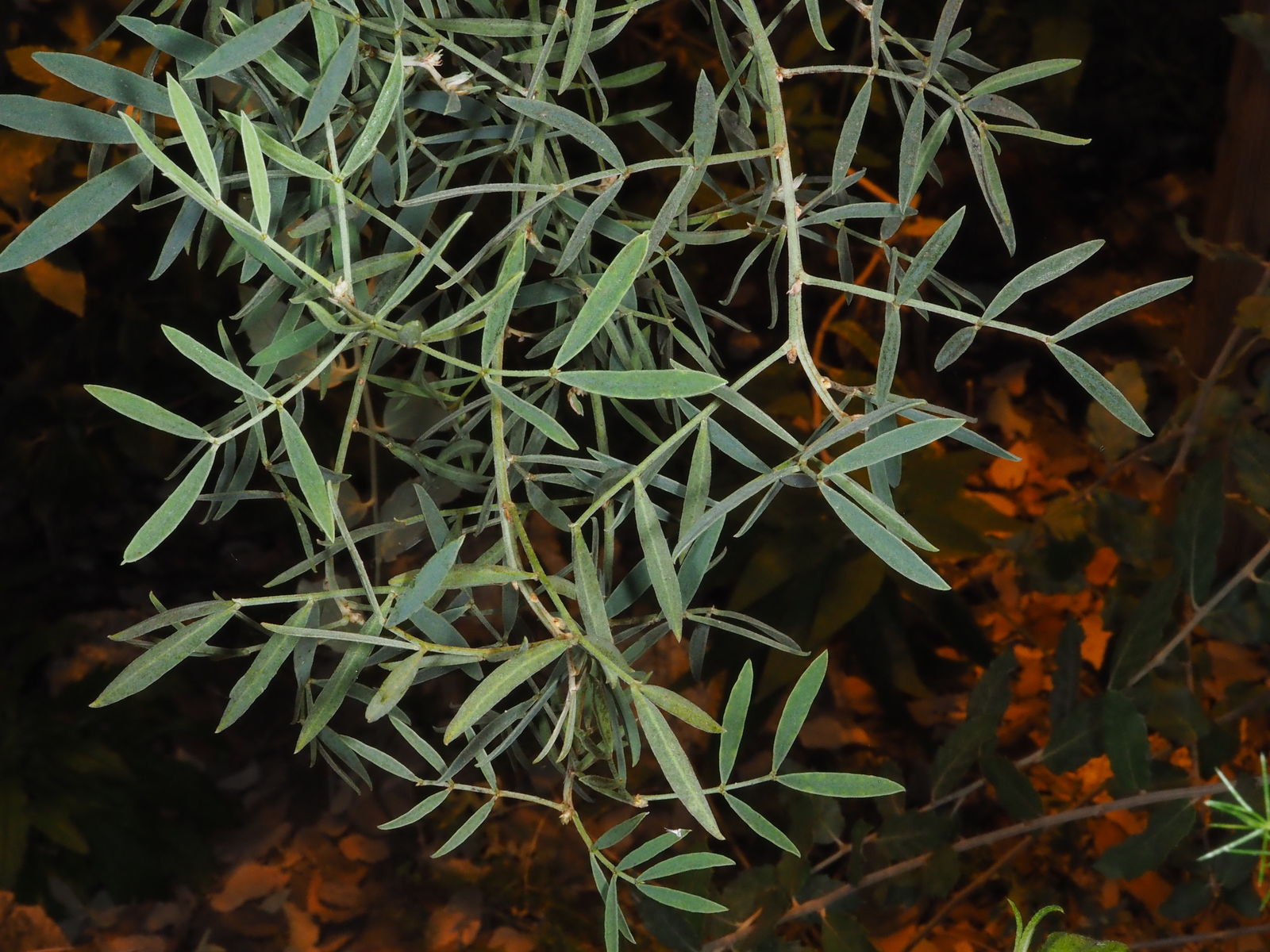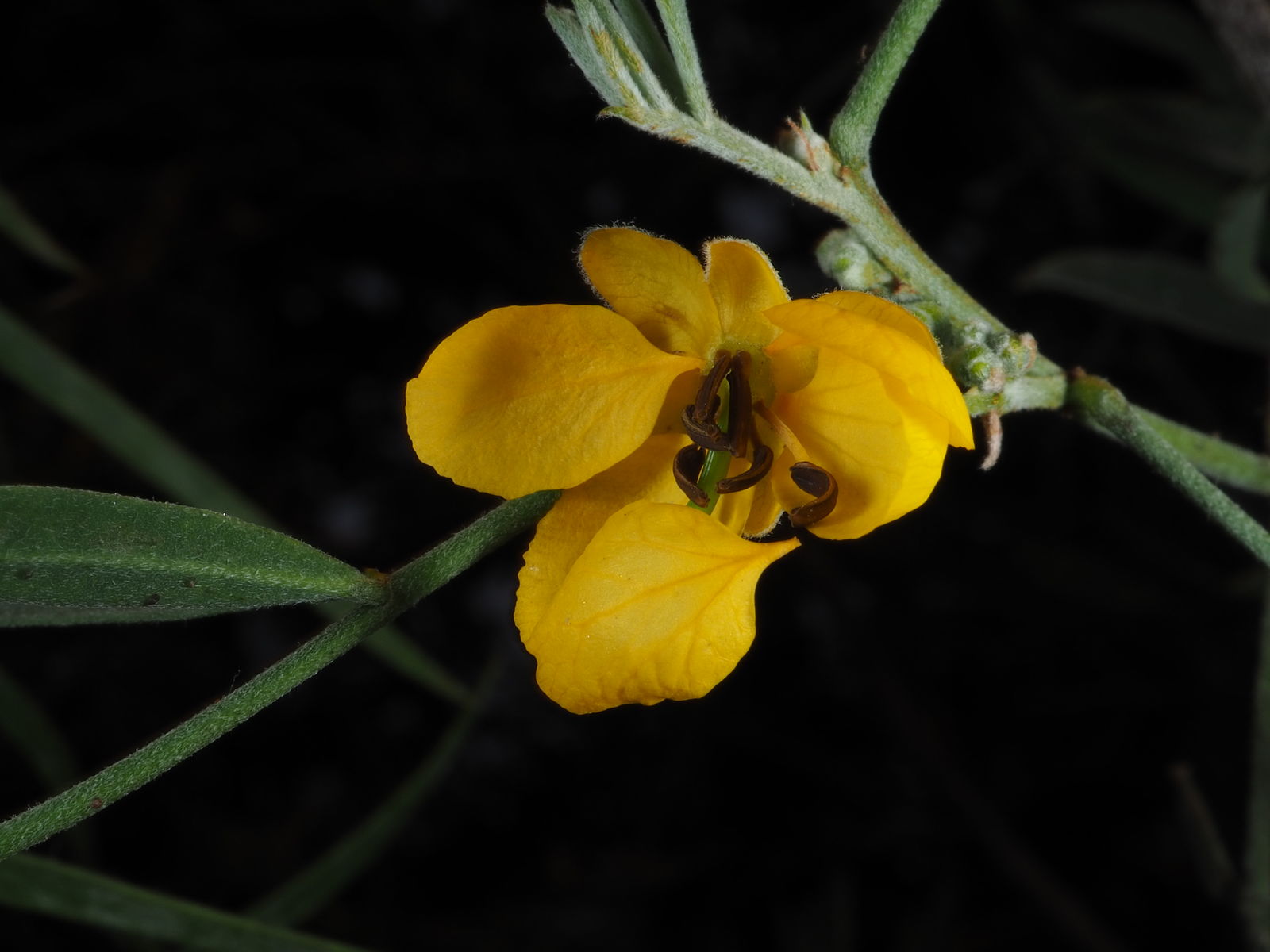Feathery Senna
senna artemisioides
Also known as: ["Feathery Cassia","Fern-leaf Senna"]
Overview
A small, evergreen shrub native to Australia, characterized by feathery, silvery-grey foliage and bright yellow flowers.
Benefits & Perks
["drought tolerant","fragrant flowers","wildlife attractant (bees, butterflies, birds)"]
Botanical Classification
| Phylum: | Magnoliophyta |
| Class: | Magnoliopsida |
| Order: | Fabales |
| Family: | Fabaceae |
| Genus: | Senna |
| Botanical Name: | Senna artemisioides |
Plant Characteristics
Basic Information
- Category: Shrubs
- Suitable Location: rock garden or sunny border
- Suitable For:
- Is Weed: No
- Allergenicity: low
Environmental Needs
- Climate: {"temperatureRange":"5–35°C"}
- Hardiness: {"zones":"9–11"}
- Misting: rarely required
- Drainage: Fast-draining to prevent root rot.
- Soil Type: Well-draining, sandy or loamy soil with added organic matter; cactus or succulent mix is ideal.
Maintenance Level
- Maintenance Level: moderate
- Toughness Level: high
- Pruning Frequency: Annually or every 2–3 years, depending on growth rate and desired shape.
- Pruning Intensity: Moderate; remove up to one-third of old growth to rejuvenate the plant.
Care Details
Ideal Sunlight Coverage:
Full sun to bright indirect light, 6–8 hours daily; adjust for intense summer sun to prevent scorching.
Sunlight Tolerance Tips:
Acclimate plants gradually to intense sunlight; provide shade during peak summer hours; for indoor plants, place near south-facing windows with filtered light.
Care Requirements
Care Difficulty
moderatemoderate
Sunlight
full sun
Rotate plant weekly for even light exposure; use sheer curtains to diffuse harsh sunlight; monitor for signs of sunburn.
Watering
every 2–3 weeks during active growth, reduce in winter
Water deeply but infrequently; ensure excellent drainage; adjust frequency based on season and growth phase.
Soil
well-draining, sandy or loamy soil
pH: Slightly acidic to neutral (pH 6.0–7.0).
Ensure pots have drainage holes; avoid heavy clay soils; top-dress with compost annually.
Temperature
Prefers warm temperatures (65–85°F or 18–29°C); tolerates mild frosts but thrives in moderate warmth.
Protect from frost; ensure good air circulation in heat; adjust watering with temperature changes.
Fertilizing
every 2–3 months during spring and summer
Fertilize only during active growth; flush soil occasionally to prevent salt buildup; use a low-nitrogen formula for succulent-like plants.
Propagation
Methods
Stem cuttings or seed; stem cuttings are more reliable for home growers.
Step-by-Step Propagation Guide
- Take a 4–6 inch cutting.
- Let it callus for a few days.
- Dip in rooting hormone.
- Plant in medium.
- Keep moist and warm.
Best Time: Spring or early summer when the plant is actively growing.
Environment
Warm (70–75°F or 21–24°C), humid, and bright but indirect light; protect from direct sun.
Medium
Well-draining mix of perlite and peat moss or cactus/succulent soil.
Hormone
Recommended to use rooting hormone for faster and more reliable rooting.
Timeline
Roots typically form in 3–6 weeks; new growth may take 2–4 months.
Tools Needed
Sharp pruners, rooting hormone, small pots, well-draining medium, plastic wrap or propagator.
Quick Tips
Use healthy, non-flowering stems; maintain consistent humidity; avoid overwatering.
Pruning & Repotting
Pruning Guide
Method
Selective thinning of stems; heading back to encourage branching; remove dead or diseased wood.
Pruning Plan
Prune to maintain shape, encourage bushiness, and remove dead or overgrown stems; best done after flowering or in early spring.
Tools
Clean, sharp bypass pruners or secateurs, pruning saw for thick stems.
Checklist
Sterilize tools; prune during dormancy or after flowering; make clean cuts just above a node.
Repotting Guide
Best Season
Early spring before new growth begins.
Pot Size
Increase pot size by 2–3 inches in diameter; ensure good drainage holes.
Method
Remove plant gently; trim any circling roots; place in a slightly larger pot with fresh, well-draining soil; water lightly.
Suggestions
Repot every 2–3 years or when roots fill the pot; beneficial for younger plants to encourage growth.
Checklist
Check root bound status; prepare new pot with drainage; use fresh soil mix; water sparingly after repotting.
Advanced Care Tips
Watering Mastery
Watering Checklist
Check soil moisture before watering; water deeply; ensure drainage; adjust for season.
How to Apply Water Properly
Water thoroughly at the root zone until water drains from the bottom, ensuring even moisture without waterlogging; water early in the day to minimize evaporation and fungal issues.
Watering Schedule Tips
Water sparingly during active growth (spring/summer), allowing soil to dry between waterings; reduce watering significantly in winter to prevent root rot.
Soil Improvement
Add perlite, coarse sand, or pumice to improve drainage; incorporate compost for organic matter.
Temperature Stress Management
Signs of Temperature Issues
Chlorosis or leaf drop in extreme cold; wilting or scorching in excessive heat.
Cold Stress
Slows growth; may cause leaf drop or dieback if exposed to prolonged cold below 20°F (-6°C).
Solution: Move to a sheltered location; provide frost protection; reduce watering in cold periods.
Hot Stress
Leaves may wilt, curl, or scorch if exposed to intense heat without adequate water or shade.
Solution: Provide partial shade during peak heat; increase humidity; water deeply but avoid waterlogging.
Fertilizing Guide
Fertilizing Checklist
Check growth phase; dilute fertilizer; apply to moist soil; avoid foliage contact.
Fertilizing Method
Use a balanced, water-soluble fertilizer diluted to half strength every 4–6 weeks during spring and summer; avoid fertilizing in fall and winter.
Common Problems & Solutions
Toxicity Warning
Cats
Slightly ToxicCats are sensitive to anthraquinone glycosides, which can cause gastrointestinal irritation and diarrhea upon ingestion. The compounds may also lead to electrolyte disturbances if consumed in large amounts.
⚠️ Symptoms:
🌿 Toxic Parts:
⚡ Toxic If:
if eaten
Dogs
Slightly ToxicThe anthraquinone glycosides in Senna artemisioides can cause gastrointestinal upset in dogs if ingested. These compounds stimulate the intestines, leading to increased bowel movements and potential dehydration if excessive diarrhea occurs.
⚠️ Symptoms:
🌿 Toxic Parts:
⚡ Toxic If:
if eaten
Humans
Slightly ToxicSenna artemisioides contains anthraquinone glycosides, which can act as laxatives when ingested in sufficient quantities. These compounds stimulate bowel movements by increasing intestinal motility and water secretion. Overconsumption may lead to electrolyte imbalances and potential gastrointestinal distress.
⚠️ Symptoms:
🌿 Toxic Parts:
⚡ Toxic If:
if eaten
Frequently Asked Questions
Q: Does Senna artemisioides require much water?
A: It is drought-tolerant and prefers well-drained soil, making it suitable for arid conditions.
Q: What are the typical uses of this plant?
A: It is primarily used for ornamental purposes and attracts wildlife due to its flowers.
Q: Is this plant toxic to pets?
A: There is insufficient data on its toxicity to pets; caution is advised.
Quick Reference
| Family: | Fabaceae |
| Care: | moderate |
| Light: | full sun |
| Water: | every 2–3 weeks during activ |
Get Expert Care Tips
Download the Plantious app for personalized care reminders and plant identification!
Google Play App Store








